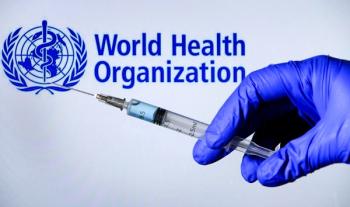
CDC Urges Prompt Treatment for Travel-Acquired Malaria
ATLANTA -- Clinicians need to act quickly and appropriately to minimize morbidity and mortality of U.S. patients with malaria, CDC researchers said.
ATLANTA, May 22 -- Clinicians need to act quickly and appropriately to minimize morbidity and mortality of U.S. patients with malaria, CDC researchers said.
Malaria remains a leading infectious disease worldwide, Monica E. Parise, M.D., and colleagues wrote in the May 23/30 issue of the Journal of the American Medical Association.
As a result, an average 1,200 cases of malaria are reported every year in the U.S., almost all of them acquired abroad. The disease causes up to 13 deaths a year, the investigators said.
To help familiarize U.S. clinicians and laboratory personnel with the disease and patterns of drug resistance, and to speed diagnosis, the researchers did a systematic review of pertinent articles from 1966 through July 2006, plus additional references from the bibliographies of those articles.
Consideration of a malaria diagnosis based on travel history is the key to diagnosis, the researchers wrote. Any patient who has been in an endemic area in the year preceding the onset of malarial symptoms should be evaluated for the disease.
Symptoms are nonspecific and include fever, chills, headache, malaise, nausea, vomiting, diarrhea, abdominal pain, myalgias, back pain, weakness, dizziness, confusion, cough, and/or coma. Splenomegaly is a frequent physical finding (24% to 40% of case patients). Diagnosis is confirmed by microscopic demonstration of malaria parasites on Giemsa-stained thick and thin blood films.
The researchers warn, however, that even those who have not traveled in a malarial area may have the disease. Patients may have provided inaccurate information or may have been infected through rarely occurring mechanisms such as transfusion, congenital transmission, or local mosquito-borne transmission.
Chloroquine remains the treatment of choice for the Plasmodium falciparum strain acquired in areas without chloroquine-resistant strains.
Patients with malaria should be treated immediately because P falciparum infections can progress rapidly to severe illness or death in as little as one or two days. If the species cannot be identified, the patient should be treated as if infected with P falciparum until the species can be identified, the researchers advised.
If the infection was acquired in an area with chloroquine resistance, a combination of atovaquone and proguanil (Malarone) or quinine plus tetracycline, doxycycline, or clindamycin are the best treatment options.
In cases of infection with P vivax malaria acquired in Indonesia or Papua New Guinea, the treatment of choice is atovaquone-proguanil, with mefloquine or quinine plus tetracycline or doxycycline as alternatives, they said.
Quinidine is currently the recommended treatment for severe malaria in the U.S. However the drug is more cardiotoxic than quinine and should be given in an intensive care unit with continuous electrocardiographic and frequent blood pressure monitoring, the researchers wrote.
Severe malaria occurs when a patient with asexual malaria
parasitemia, and no other confirmed cause of symptoms, has one or more designated clinical or laboratory findings (e.g. impaired consciousness, multiple convulsions, pulmonary edema, circulatory shock, jaundice, acute renal failure). The only adjunctive measure recommended in severe malaria is exchange transfusion.
It is also important to determine the prevalence and drug-resistant pattern of the area in which the infection was acquired, the researchers said.
For example, they said, P falciparum predominates in sub-Saharan Africa, Hispaniola, and Papua New Guinea.
Among the other species, Plasmodium vivax is the most common and predominates in South Asia, Eastern Europe and Northern Asia, and Central and most of South America.
P falciparum accounts for slightly more than 50% and P vivax approximately 25% of reported cases in the U.S., the investigators said.
Plasmodium ovale occurs mostly in West Africa and is occasionally encountered in Southeast Asia and Papua New Guinea. Plasmodium malariae occurs at low frequency in a patchy distribution worldwide.
Chloroquine-resistant strains of P falciparum occur in all endemic areas except Central America west of the Panama Canal, Mexico, Hispaniola, and parts of China and the Middle East.
Multi-drug-resistant strains occur in southeast Asia, South America, and sub-Saharan Africa.
In an earlier review of all U.S. malaria deaths from 1963 through 2001, failure to diagnose malaria on initial presentation, to initiate treatment promptly after diagnosis, and/or to prescribe an appropriate antimalarial agent were substantial contributing factors in malaria deaths, the CDC investigators wrote.
Clinicians must remain alert to the possibility of this disease and take immediate measures toward prompt accurate diagnosis and treatment, they concluded.
Newsletter
Enhance your clinical practice with the Patient Care newsletter, offering the latest evidence-based guidelines, diagnostic insights, and treatment strategies for primary care physicians.



















































































































































































































































































